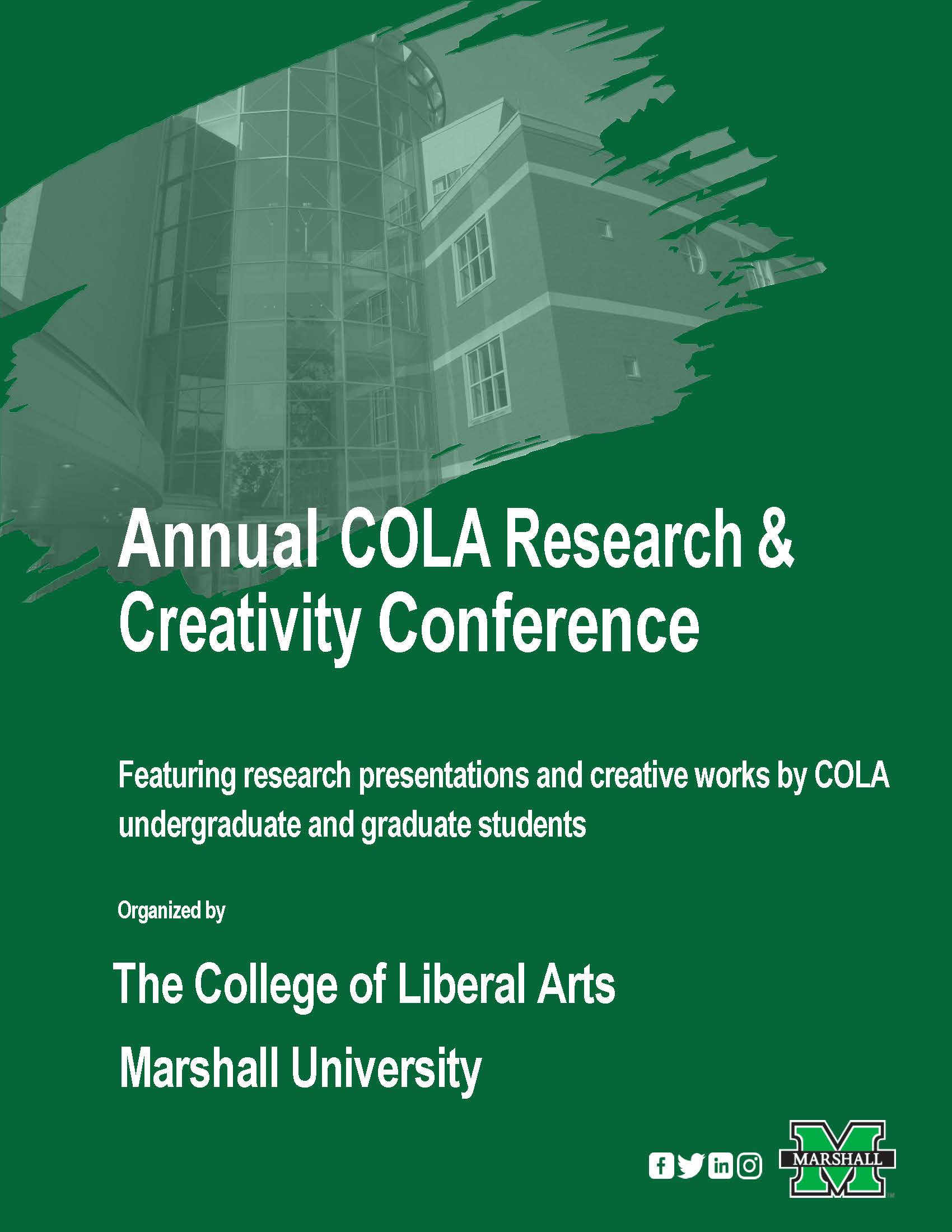Posthuman Representations in Wall-E
Document Type
Panel Presentation
Keywords
posthuman, cyborg, technology
Biography
Madeline Merritt is a West Virginia native and a junior at Marshall University. She is majoring in English, with minors in creative and professional writing, Spanish, and digital humanities. Her areas of study often include examining texts through a feminist lens and analyzing representations of humanity in posthuman settings.
Major
English
Advisor for this project
Dr. Kristen Lillvis
Abstract
The 2008 film WALL-E portrays a society where technology reigns. Seven hundred years after Earth became inhospitable, humans live aboard a spaceship called the Axiom. Human existence is reliant on the technology the ship possesses, making it an integral part of the human identity and the continuance of humanity itself. In this talk, I argue that WALL-E depicts a society governed by the laws of posthumanity, warning against complete dependence on technology while outlining the ways humans both benefit from and are hurt by the technological advancement of contemporary society. This posthuman society establishes a new form of human identity that is reliant on the presence of technology, asserting that it is impossible to be solely human in a technologically diverse world and calling into question the boundaries of humanity itself even while arguing there is no way to reverse these changes to the human identity.
After a brief literature review, I position WALL-E in the context of cyborg and posthuman theory. I focus on the relationships between humans and robots in the film, claiming that both entities take on the characteristics of the other. I conclude by examining the return to Earth at the end of the film and the images that appear during the credits, performing a close reading of the continued reliance on robots as evidence of humanity’s unending dependence on technology.
Posthuman Representations in Wall-E
The 2008 film WALL-E portrays a society where technology reigns. Seven hundred years after Earth became inhospitable, humans live aboard a spaceship called the Axiom. Human existence is reliant on the technology the ship possesses, making it an integral part of the human identity and the continuance of humanity itself. In this talk, I argue that WALL-E depicts a society governed by the laws of posthumanity, warning against complete dependence on technology while outlining the ways humans both benefit from and are hurt by the technological advancement of contemporary society. This posthuman society establishes a new form of human identity that is reliant on the presence of technology, asserting that it is impossible to be solely human in a technologically diverse world and calling into question the boundaries of humanity itself even while arguing there is no way to reverse these changes to the human identity.
After a brief literature review, I position WALL-E in the context of cyborg and posthuman theory. I focus on the relationships between humans and robots in the film, claiming that both entities take on the characteristics of the other. I conclude by examining the return to Earth at the end of the film and the images that appear during the credits, performing a close reading of the continued reliance on robots as evidence of humanity’s unending dependence on technology.



